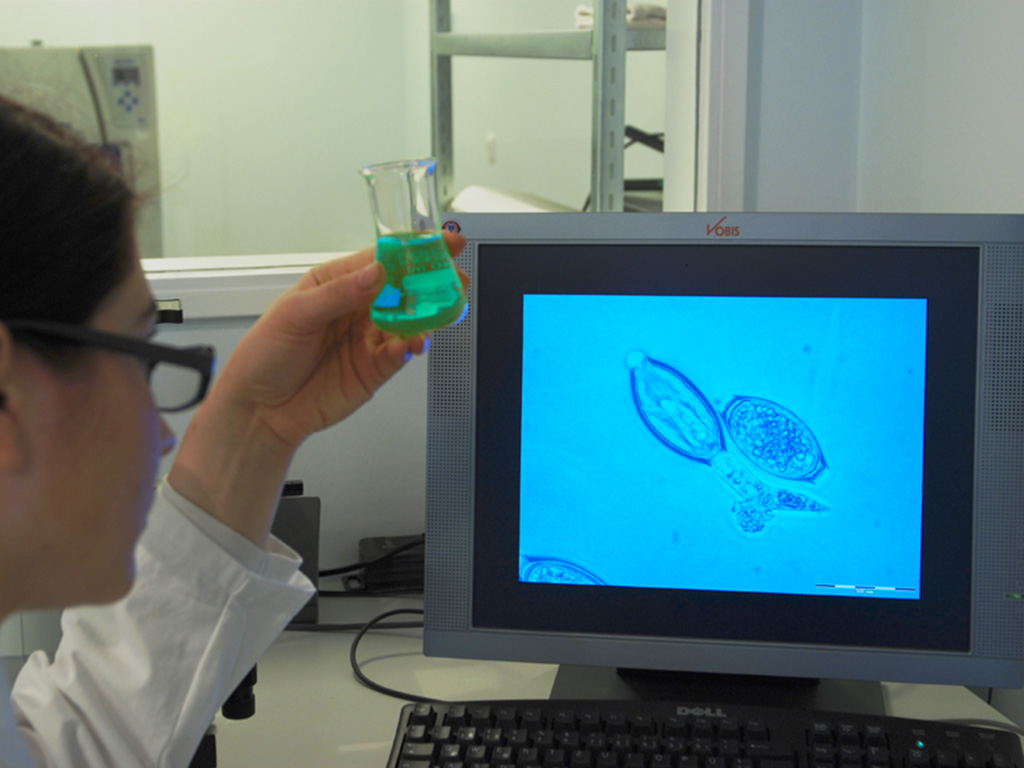About Tanawisa
Helminthic Therapy:
It all started in 1995
Gastroenterologists around the world have been searching for ideal and effective treatments for inflammatory bowel disease. Reviewing decades of literature while editing journal articles on liver and intestinal parasites, Prof. Joel Weinstock of the Iowa University Center for Digestive Diseases kept coming back to the idea that all well-adapted helminths perform some useful function for their host, if only to ensure the host’s survival in order to provide them with a long-term home.
He later said that it was while sitting on a delayed plane waiting for takeoff that the “eureka moment” occurred, and he began to wonder if reintroducing helminths might help his IBD patients. Weinstock contacted Prof. Joe Urban, a senior researcher at the United States Department of Agriculture, and asked for his expertise on which helminth would be best for experimental use.
Naturally, as a physician, Weinstock insisted that the ideal helminth candidate must have the following characteristics to be safe:
It should not persist or multiply in the host.
It should not invade or cause disease
It should not pose a public health risk; and
It should be stable and easy to produce.
Urban, known for his research on helminths, suggested Trichuris suis, the pig whipworm, which met all of Weinstock’s requirements. Urban provided Weinstock with the first organisms and the experiments began.


Nature’s most powerful probiotic:
The Weinstock Idea
Weinstock published a landmark paper linking the failure to acquire helminths to the prevalence of Crohn’s disease. [Does failure to acquire helminth parasites predispose to Crohn’s disease?] This paper was key to the development of the hygiene hypothesis. He discovered that Crohn’s disease is most common in highly industrialized countries with temperate climates. It rarely occurs in tropical third world countries with poor sanitation. Weinstock proposed that exposure to an environmental agent predisposes individuals to Crohn’s disease.
In his paper, Weinstock et al. argue that parasitic worms (helminths) are common in tropical climates and in populations subject to overcrowding and poor sanitation. Children are most vulnerable to helminthic colonization. Many helminths live in or migrate through the human gut, where they interact with the mucosal immune system. The host mounts a mucosal response that includes the production of Th2 cytokines that limit helminth colonization. Helminths and their eggs are probably the most potent stimulators of mucosal Th2 responses. The Th2 response induced by parasitic worms can modulate immune responses to unrelated parasitic, bacterial, and viral infections. Many people in developed countries now live in increasingly hygienic environments and avoid exposure to helminths. Perhaps the failure to acquire these parasites and experience mucosal Th2 conditioning predisposes to Crohn’s disease, which is an overly active Th1 inflammation.
Weinstock et al. provided the first evidence by treating 7 patients with acute, chronic inflammatory bowel disease with the eggs of the half-inch-long parasitic worm Trichuris suis. Six went into remission and the 7th improved significantly. None became ill from the worms; all gradually relapsed after the worms left their systems. (Trichuris suis appears to be safe and possibly effective in treating inflammatory bowel disease.)
Helminthic Therapy:
From experimental stage to commercial quality
So, it was time to move the biological product from the experimental stage to commercial quality according to international GMP standards. A few years earlier, a no less exotic but highly effective form of biological therapy had attracted attention: the so-called maggot therapy for the treatment of chronic, infected wounds. Maggots of a specific fly species (Lucilia sericata) were introduced into the wounds, where they established a clean, non-infectious and necrosis-free wound environment within a few days. Detlev Goj, founder of the Biomonde Company in Germany and Thailand, and his team have thus succeeded in pioneering the use of a living, biological organism in the form of maggots as a formulation drug and in producing it in compliance with all GMP guidelines.
While further and larger studies with Trichuris suis ova (TSO®) for inflammatory bowel disease were underway at the University of Iowa, Weinstock and his colleagues Elliott and Summers teamed up with Detlev Goj and his company Biomonde to establish GMP-compliant TSO® production.
This collaboration later led to the formation of a new company, Ovamed GmbH, in 2003 to clearly separate the TSO® project from the maggot therapy. The University of Iowa, which owned the patent rights to the helminth therapy developed by Weinstock and Elliott, then transferred these rights exclusively to Ovamed.
During the time Ovamed was working on establishing GMP production, Weinstock et al completed 2 major clinical trials at the University of Iowa in Crohn’s Disease (GUT 2005) and Ulcerative Colitis (Gastroenterology 2005). Both showed significant improvements.
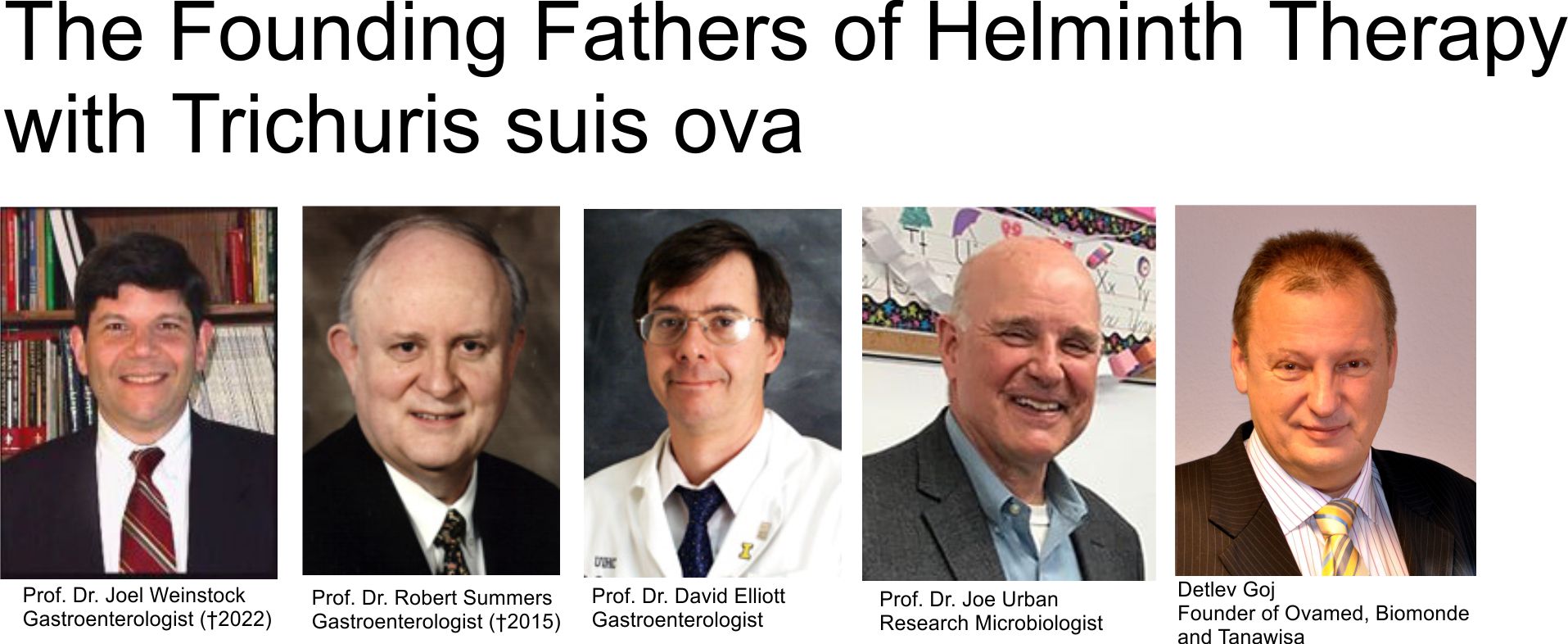

Nature’s most powerful probiotic:
Drug approval
Encouraged by these results, the next step was to enter the centralized regulatory pathway for full drug approval. This involves providing authorities such as the EMA and the US FDA with extensive data on development, toxicity studies in various models, viral safety studies, environmental safety, phase 1 clinical trials in healthy volunteers, phase 2a and 2 b clinical trials, a phase 3 trial and a phase 4 trial, all of which can easily cost from several hundred million dollars to a billion dollars for a new drug to be approved. Unlike Big Pharma, this is not something that can be done alone.
Therefore, Ovamed started looking for financially stronger partners for further development and found a medium-sized company with a significant position in the European market for inflammatory bowel diseases and later also a US investor from the life sciences industry. In cooperation with the new partner, Ovamed successfully completed product development, tox and viral safety studies, and environmental issues until it was time to define the clinical trial material. Until then, all experimental treatments, as well as the initial and subsequent clinical studies, had been performed with the original preparation of the compound, by orally administering TSO® to patients in a saline solution with a pH of 2.3. However, the new partner, experienced in drug development, insisted on increasing the pH of the TSO® solution from 2.3 to 5 and decided that this new formulation would be used in all future studies from now on. The rationale was that TSO® would later be used in pediatric clinical trials, which would require the same product specification as the adult studies, but at lower doses.
Detlev Goj strongly objected to this decision, pointing out that such a large increase in pH would negatively affect the efficacy of TSO®. Furthermore, the formulation of a product that has already proven to be highly effective should not be changed. However, the objection was rejected on the grounds that the ova are always re-tested in pigs to prove their viability before being used in clinical trials.
Helminthic Therapy:
Clinical trials
Another decision made by the new collaborator was that the medical direction of the next clinical trials should no longer be provided by Weinstock and colleagues, as it would be more valuable if other physicians could replicate the results of the studies conducted by Weinstock et al. The fatality of these decisions was to become apparent only later. Detlev Goj used this decision as an opportunity to produce the original TSO® version of pH2.3 in parallel with Ovamed in his company Biomonde in Thailand, since Thailand was not included in the rights agreement with the new cooperation partner. A wise decision, as it turned out later.
All studies using the original TSO® at pH 2.3 were successful. These studies are as follows:
Trichuris suis seems to be safe and possibly effective in the treatment of inflammatory bowel disease
Trichuris suis therapy in Crohn’s disease
Trichuris suis therapy for active ulcerative colitis: a randomized controlled trial
Probiotic helminth administration in relapsing-remitting multiple sclerosis: a phase 1 study by John Fleming (HINT1)
Trichuris suis ova (TSO®) as an immune-inflammatory treatment for repetitive behaviors in ASD by Eric Hollander
All of the other studies, except for the ones mentioned above, have used the modified formula of TSO® at a pH of 5.
It is particularly striking that the second multiple sclerosis clinical trial (HINT2) by John Fleming with a pH5 TSO® showed only a very moderate decrease in the number of Gd+ lesions during treatment, while the HINT1 study with a TSO® of pH 2.3 showed significantly better results.
The same can be seen in the second ASD study by Eric Hollander, where no statistically significant differences between treatment groups were achieved with a TSO® at pH 5, while his first study with a TSO® at pH 2.3 showed much better results.
This alone shows that a TSO® at pH 5 does not have the same efficacy as a TSO® at pH 2.3.
The biggest disaster was the large pivotal phase 2b trial in Crohn’s disease, which also showed no benefit of a pH 5 TSO® versus placebo in the treatment of active CD. Apart from the fact that an ineffective TSO® preparation was used, there were other reasons for the failure of this pivotal trial. These were due to the design of the study and the high level of media attention it received. The reason why a TSO® at pH 5 is ineffective
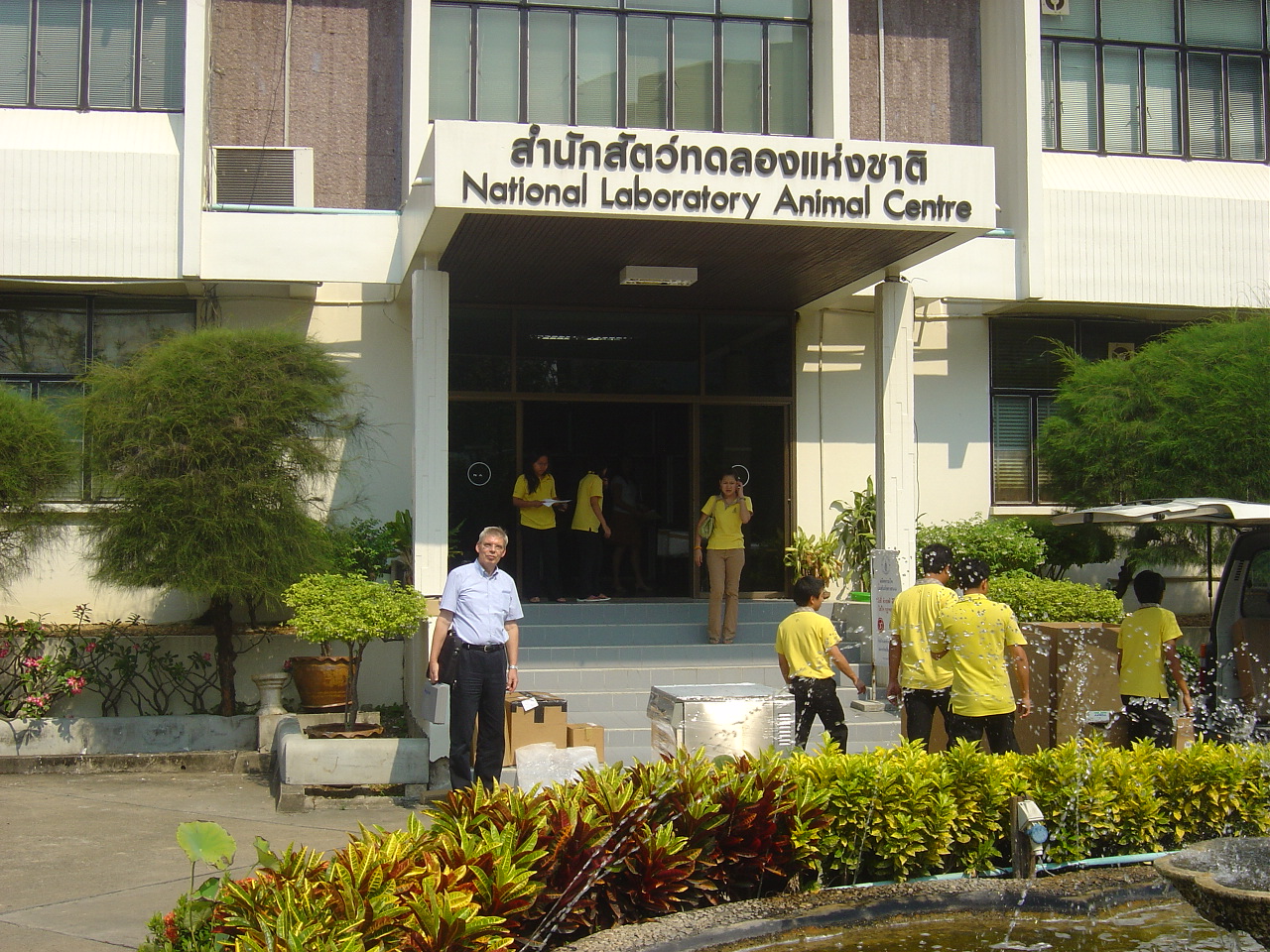
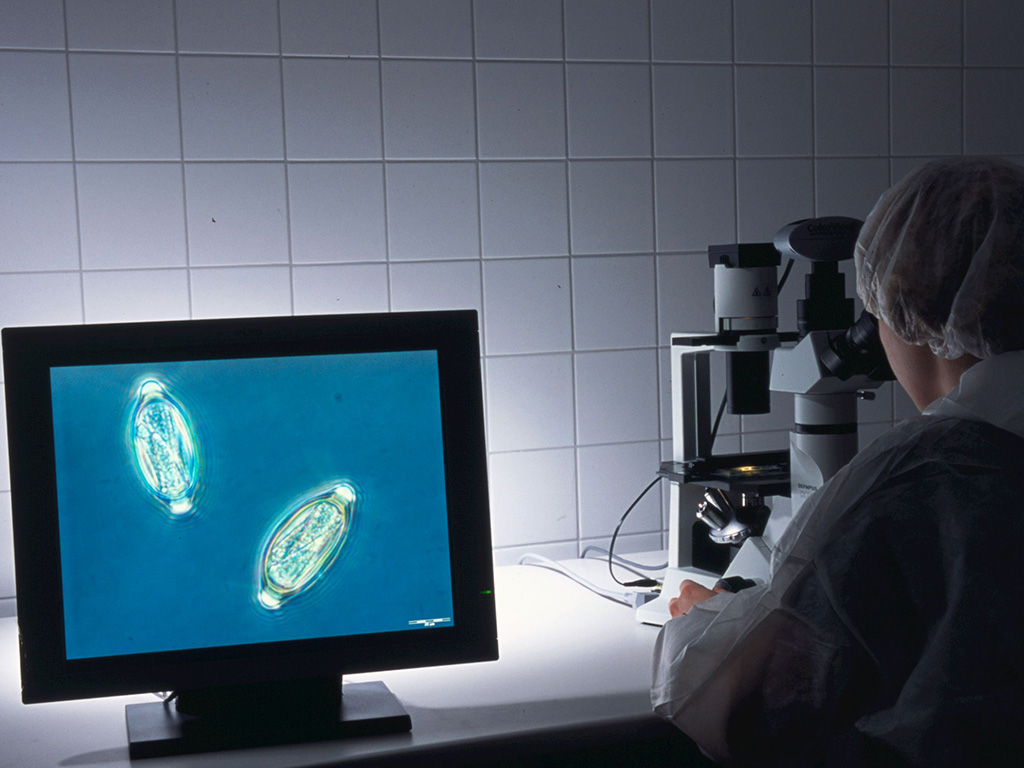
Nature’s most powerful probiotic:
Influence of the Pondus Hydrogenii (ph) value
The reason why TSO® is ineffective at pH 5 is due to its natural life cycle. The natural host of TSO®, the pig, ingests the eggs orally. These pass through the gastrointestinal tract during Trichuris suis swallowing and first enter the gastric acid where they encounter an extremely acidic environment in the pH range of 0.5 to 1.0. The egg’s tough chitin shell protects the worm embryos inside the egg, allowing them to survive this acidic passage unharmed and then enter the intestine of their new host, which has a pH of up to 8. There, the eggs attach to the mucosa in the area of the cecum and hatch. The hatching process is initiated by the preceding pH jump from very acidic to very basic, which further drives embryonation and serves as a trigger to ramp up their metabolism and thus initiate the hatching process.
It should be noted that the manufacturing process of TSO® already includes washing the eggs in an extremely acidic environment between pH 0.5 and pH 1 with the goal of reliably killing any germs and viruses that may be present. In the original formulation of the TSO® solution, there was only a relatively small pH jump when buffered to a pH of 2.3 (which is similar to the pH of Coca-Cola). This pH jump was far from sufficient to initiate embryonation. With the original TSO® formulation, this initiation occurred only during the swallowing process in the patient’s body, so that a maximum number of intact TSO® eggs could attach to the intestinal mucosa for hatching and thus achieve a high therapeutic efficacy.
However, in the TSO® formulation with a pH of 5, the pH jump from below 1 to 5 is already so significant that the embryos inside the eggs in the bottle already increase their metabolism because they experience the trigger that is supposed to initiate their hatching. In the bottle, however, unlike in the gut, there is nothing to metabolize, which in turn leads to a significant weakening of the worm embryos inside the eggs or can even cause some of them to hatch prematurely in the bottle. As mentioned above, the collaboration partner argued that re-infection of the eggs in pigs, among other things, serves as a viability test and ensures that the eggs can be safely used in patients. Unfortunately, this did not take into account the fact that even extremely weakened worm embryos find food in pigs, their natural host, immediately after hatching and can thus regain their strength. In humans, on the other hand, a host that is not suitable for their survival, the worm embryos do not find this food opportunity and thus cannot develop their full immunological therapeutic effect at all due to a lack of vitality. Therefore, the studies with a TSO® at pH 5 could not be successful at all.
Helminthic Therapy:
Media attention to clinical trials
Another aspect of this pivotal study was the extremely high effect in the placebo group, which was not seen in any other study. It is therefore reasonable to assume that the very high media attention prior to the start of the study may have led to this unusually high placebo effect, making a significant difference between placebo and verum even more difficult. Poor subject selection may also be another reason for the high rate of improvement in the placebo group.
Worst of all, other researchers have begun to cite these studies with TSO® in pH5 to support claims that TSO® is ineffective. For example, four of these trials were even included in a meta-analysis of six trials which concluded that TSO® therapy showed no statistical benefit for IBD patients. What is really frightening is that none of these scientists ever asked why the early trials were so successful and the later ones were not. Despite the fact that it has been made public that all the unsuccessful TSO® trials were conducted with a different formulation than the successful TSO® trials, no one has found it necessary to include this important factor in the evaluating publications. This again says a lot about the thoroughness of the research in the various publications, as well as the quality of the review process prior to publication.
Although it is common practice to run a clinical trial for 12 weeks, this is not the best length of time to test a natural product such as helminths. While this is the standard trial period used in pharmaceutical research, it is not appropriate for studies of live helminths such as TSO®, which typically do not begin to provide benefits until 8 weeks, and remission is typically not achieved until 20 weeks, with even longer waits for some patients with severe or chronic disease.
Randomized clinical trials (RCTs) are considered the “gold standard” experimental method for researching medical treatments, but the evidence produced by RCTs that have examined the efficacy of helminth therapy is in stark contrast to the many independent lines of evidence that have converged to demonstrate the significant health benefits of helminth hosting.
An extensive body of data from epidemiological studies, clinical observations, and investigations in animal models has strongly suggested that humans require exposure to helminths in order to enjoy optimal immune function, and many hundreds of anecdotal reports from self-treating helminths attest to the therapeutic benefits of deworming.
To demonstrate the high efficacy and tolerability of helminths in clinical trials, study designs would have to be adapted to the natural environment and living conditions of the product. This would require a much longer trial duration and treatment should start with a low dose and be escalated individually. Unfortunately, this is not the usual practice in the pharmaceutical industry and there is probably not enough flexibility to change this.
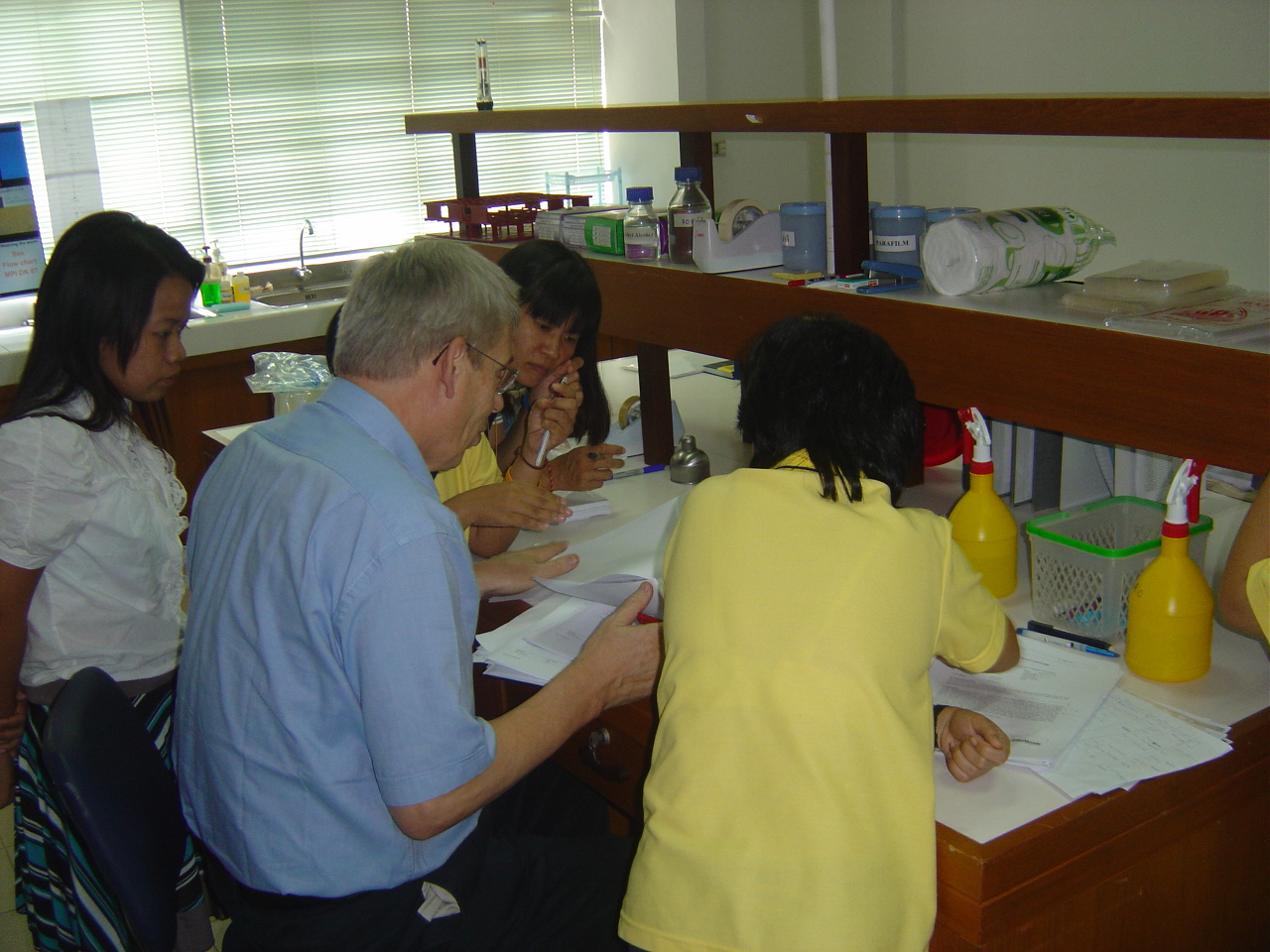

Nature’s most powerful probiotic:
Approval in Asian countries
Due to the failure of the Phase 2b study with TSO® in pH5, the collaboration partner issued the following statement:
Unfortunately, the completed study in Crohn’s patients with TSO® did not show an adequate effect of TSO®. Therefore, we have discontinued the clinical trials and any potential regulatory process.
All the effort and money invested in this cooperation and development was in vain, so Ovamed company had to go bankrupt and be dissolved. Now, however, it has paid off that Detlev Goj, together with his Thai team of Biomonde, was able to establish a production in Thailand in the meantime and also received an approval as well as an export permit for TSO® from the Thai FDA.
Unlike Western countries, Asian countries have a long history of using natural healing methods, which is reflected in their regulations. For example, if a preparation consists of only natural ingredients and can demonstrate in toxicity and phase 1 human studies that it poses no danger to the human body, it is exempted from the major approval process and receives approval on the same basis as, for example, medicinal teas and herbs. Conditions that TSO® was able to meet in full. The exact wording in the Thai FDA approval is
Trichuris suis Ova (TSO®) is classified as a natural medicine/herb which is exempt from pharmaceutical registration for domestic marketing. Therefore, Trichuris suis Ova (TSO®) is approved for export from Thailand.
Shortly after receiving approval in Thailand, TSO® was again separated from Biomonde Maggot Therapy and transferred to Tanawisa. Tanawisa has made a name for itself in recent years as a reliable supplier of the original TSO® in pH 2.3, which has now been proven effective in thousands of patients in and out of clinical trials, in line with the initial study successes of Weinstock, Elliott, Summers, Fleming and Hollander. Customers around the world appreciate the high quality of service.
Helminthic Therapy:
European countries followed
In the meantime, the European authorities have also decided to classify TSO® as a probiotic or novel food and have already accepted a first application for approval. However, as such a classification is primarily intended for use in healthy people, a large Phase 1 safety study in healthy volonteers is still required. TSO® has been shown in more than 17 clinical studies to be very well tolerated with no clinically relevant side effects, but these have all been clinical studies in sick patients.
Tanawisa is looking for a partner to conduct such a large Phase 1 safety study in healthy volunteers, as the costs are too high for Tanawisa to bear alone. The completion of this new study would lead to TSO® being used as an additive to existing probiotics such as Yakult or Actimel, making it available to the vast majority of people even in supermarkets. It would then be the first product of its kind to put various autoimmune diseases into remission.
